The former millionaire's playground that's now swallowed by sand
Tour the diamond-mining ghost town that time forgot
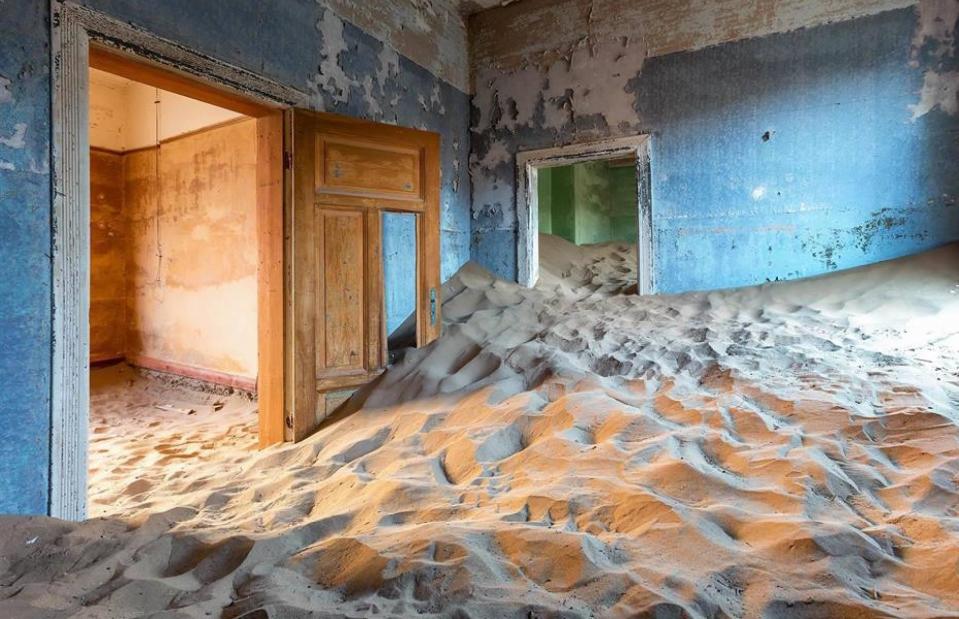
Kanuman / Shutterstock
The long-forsaken mining settlement of Kolmanskop produced 11.7% of the world's diamonds in its heyday and was among the richest communities in the world, boasting everything from fine mansions to a hospital, an entertainment and leisure complex, an ice factory and even the first X-ray machine in the southern hemisphere.
Read on to explore this eerie ghost town in the Namib Desert and discover how it succumbed to the sands of time...
Diamond rush

GIANLUIGI GUERCIA / AFP / Getty Images
In 1908, local railway worker Zacherias Lewala discovered rough diamonds while digging track in a desolate part of Namibia, which was under German colonial rule. The find sparked a diamond rush in German South West Africa, with the authorities claiming the spoils. Indigenous tribespeople were displaced or hired as cheap labour and a fully-fledged town soon sprang up in the middle of the desert.
Boom town

U. Eisenlohr / Shutterstock
The abandoned ghost town was originally named Kolmannskuppe (German for 'Coleman's Head') after a nearby hill where a transport driver called Johnny Coleman was forced to abandon his wagon while lost in a sandstorm in 1905. By 1912, the town was producing a million carats a year and its German inhabitants, which numbered around 340 at the settlement's peak, were becoming very wealthy indeed.
Idyllic oasis
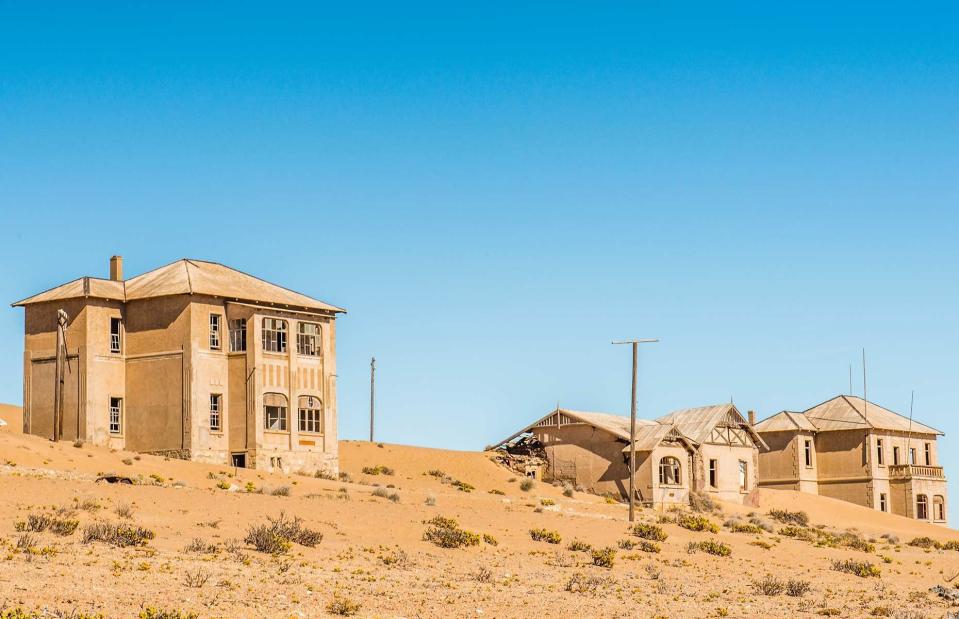
Anton_Ivanov / Shutterstock
The town's denizens effectively recreated a German village in the desert, with the architectural style of the buildings closely resembling equivalent edifices back home. Meanwhile, water brought in by rail enabled residents to grow lush plants, creating a verdant haven in the desert. The settlement even had a form of public transport, a taxi on rails pulled by mules, plus a railway station and premium amenities such as an outdoor swimming pool.
Shopping street
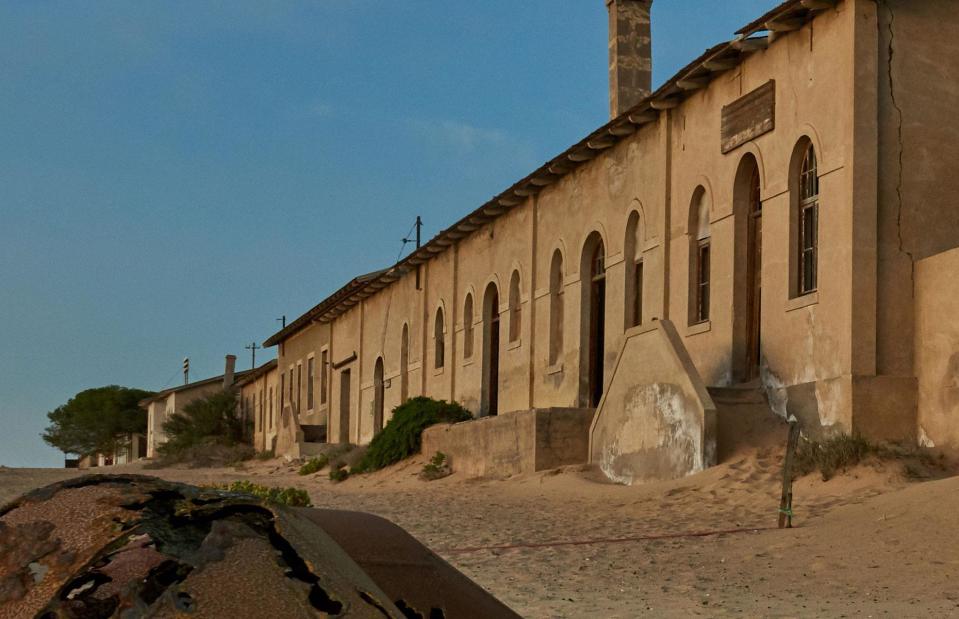
Carol Taylor / Shutterstock
Kolmannskuppe Ladenstrasse, the community's shopping street, was constructed near the entrance of the town. The moneyed residents could afford to splash out on luxuries and the thoroughfare had a post office, butchers, bakery, general store and an ice-making facility, which supplied each household with a huge block of ice per day.
Luxury goods
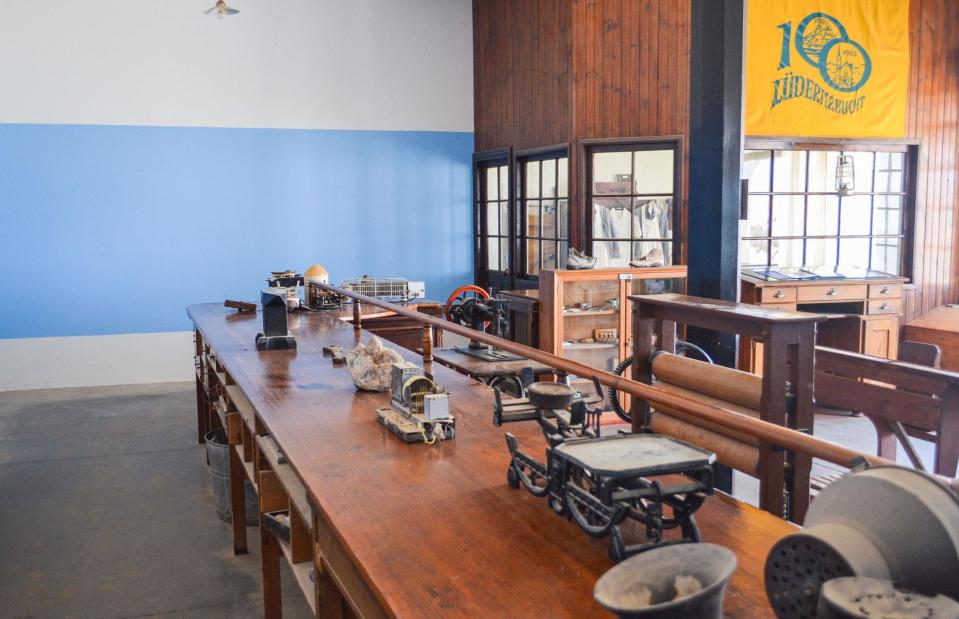
jbdodane / Shutterstock
The general store and adjacent shopkeeper's residence have been restored and function as a museum these days. A purveyor of all sorts of items from the mundane to the exotic, the shop was run by one of the richest women in the region at the time, since customers often paid her in diamonds in lieu of hard cash. An old ledger shows some of the expensive imported treats stocked in the store, including caviar, Camembert cheese and chocolate.
Modern hospital
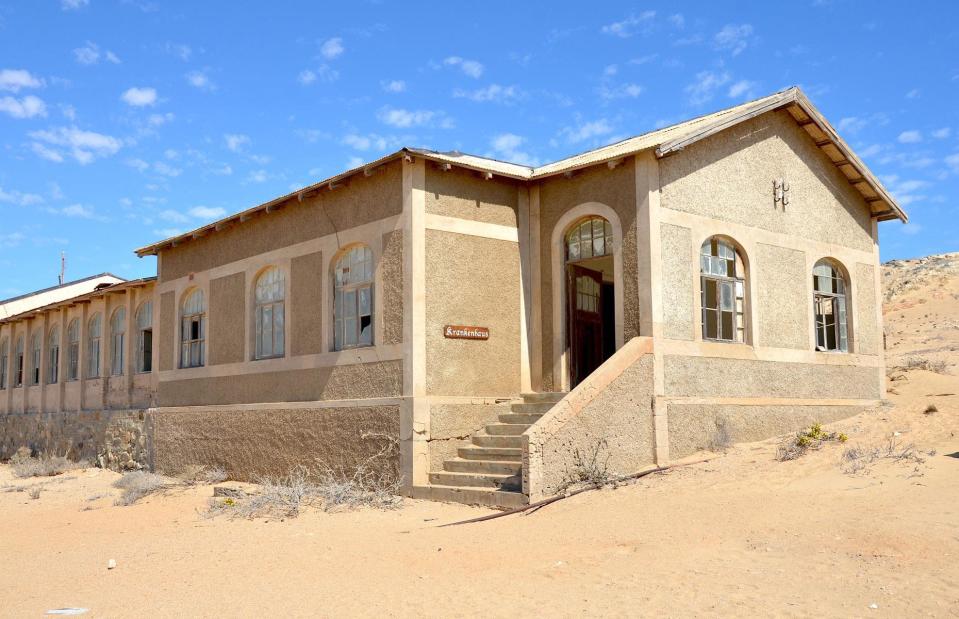
Olga Ernst, Wikimedia Commons
At the end of the abandoned shopping street stands the town's hospital. Once a state-of-the-art facility that could accommodate up to 200 patients, it was kitted out with all the latest medical equipment. Perhaps the most impressive is the early X-ray machine – a first in the southern hemisphere – which was said to have been procured to scan workers for ingested stolen diamonds.
Curious prescriptions
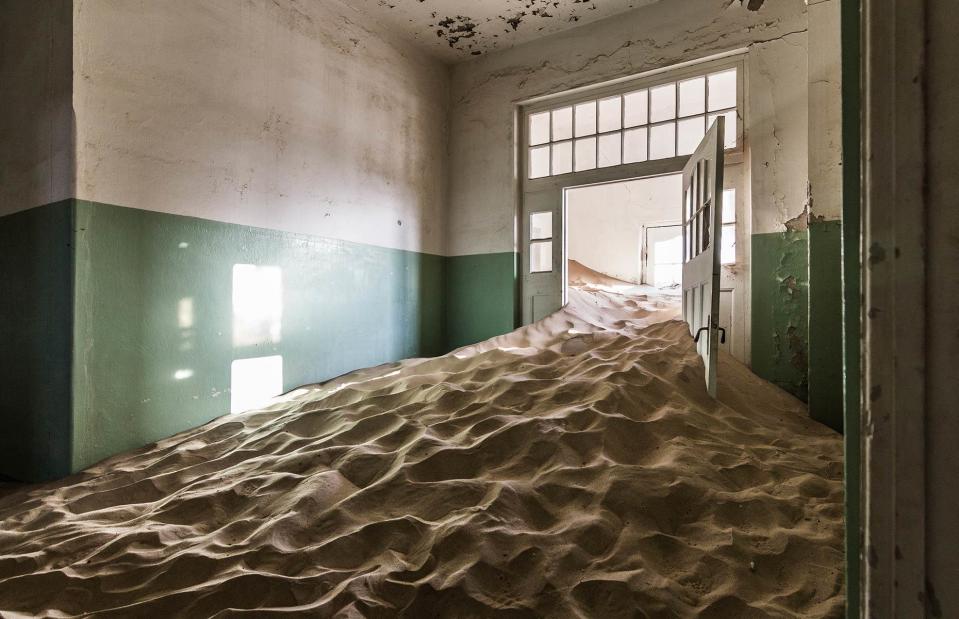
gregorioa / Shutterstock
One of the town's two physicians, Dr Kraenzle reportedly advocated treating ailments with champagne and caviar of all things, and would regularly prescribe patients an evening glass of bubbly and a sandwich loaded with the fishy delicacy to revive their health. The hospital even had a wine cellar to store all those bottles of pricey fizz.
New name
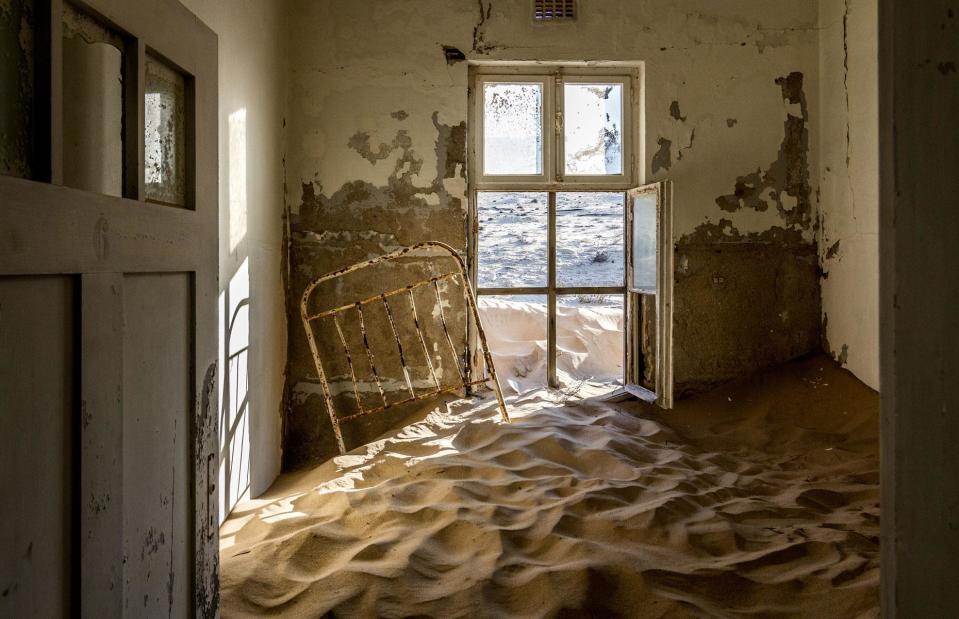
gregorioa / Shutterstock
Today, the medical facility is engulfed in sand, which pours in through the building's broken windows. In 1915, the German colonial troops were defeated and Kolmannskuppe became part of the Union of South Africa, with mining resuming after the First World War. Sometime later, Kolmanskop, the Afrikaans version of the town's name, was adopted.
Boarding house
![<p>Sonse / Flickr [CC BY-ND 2.0]</p>](https://s.yimg.com/ny/api/res/1.2/WIqRyzMD7Gyt4UI_JASPTQ--/YXBwaWQ9aGlnaGxhbmRlcjt3PTk2MDtoPTYxOQ--/https://media.zenfs.com/en/loveproperty_uk_165/38c730a0dc9bfd736763577b5ddc40a8)
Sonse / Flickr [CC BY-ND 2.0]
Just across from the hospital is the town's once-swish boarding house, which is said to have housed unmarried German miners. The 800 or so local Ovambo contract workers on the other hand reportedly had to make do with altogether more modest huts located to the south of the settlement. Nowadays, the interior of the boarding house is almost full to the rafters with sand.
Leisure complex
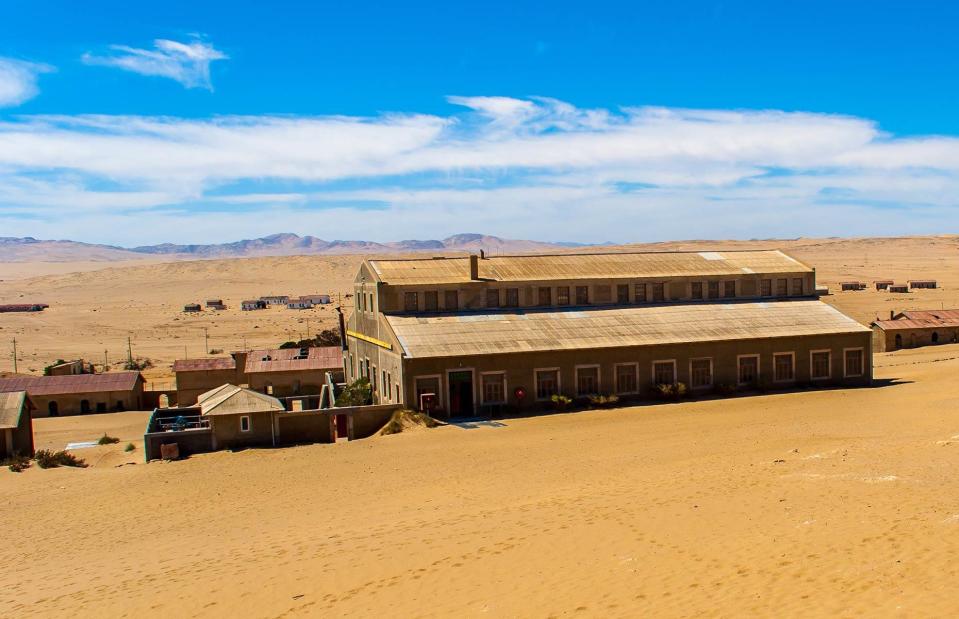
Rudi Venter / Shutterstock
The main school was built around the corner – a stone's throw away from the settlement's grandest building, the sprawling kasino and turnhalle. Constructed in 1927 using a steel frame imported from Germany, it served as a multipurpose entertainment and leisure complex for the town's residents and was no doubt the scene of hours of fun. One of the few buildings in the town that has been saved from the encroaching desert, the structure contains a cavernous main hall where concerts and parties took place.
Skittle alley
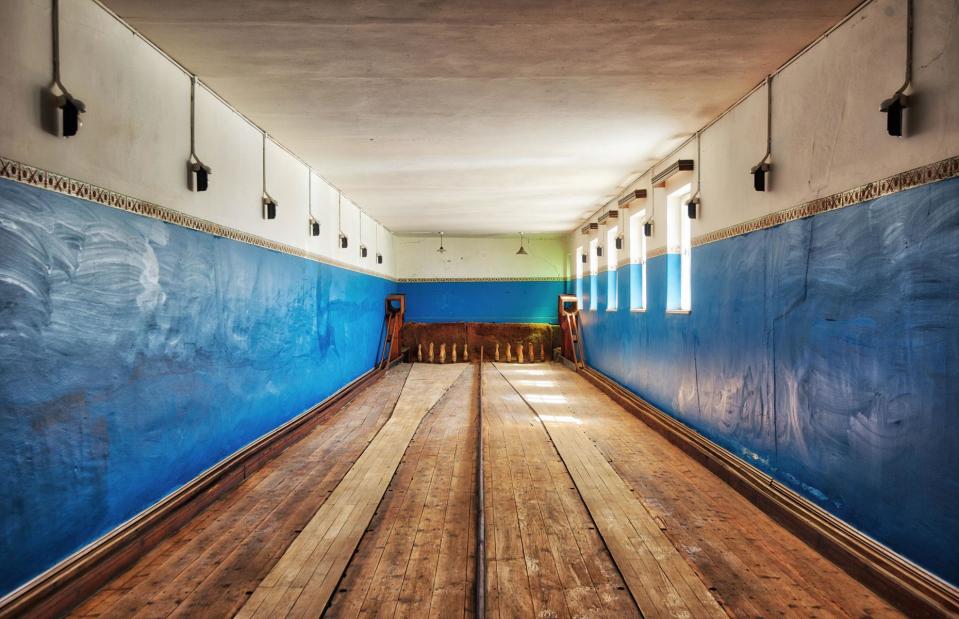
Lukas Bischoff Photograph / Shutterstock
The venue hosted opera companies from Europe at great expense, while a local eight-piece orchestra and drama troupe put on regular shows. It was also used as a restaurant and the kitchen was fitted with an enormous stove that could cook 380 meals a day. A sophisticated setup, the complex's champagne bar was strictly for the ladies, while there was a gentlemen-only cigar lounge in the building too, not to mention this impressive skittle alley.
Opulent amenities
![<p>Olga Ernst / Wikimedia Commons [CC BY-SA 4.0]</p>](https://s.yimg.com/ny/api/res/1.2/9cAK30LaKVwbgs6TqNUfzw--/YXBwaWQ9aGlnaGxhbmRlcjt3PTk2MDtoPTYxOQ--/https://media.zenfs.com/en/loveproperty_uk_165/6a06de0de142cc572f26b8f74b4b758a)
Olga Ernst / Wikimedia Commons [CC BY-SA 4.0]
As well as the kasino and turnhalle, the thriving town was also home to an ice factory – a real luxury in the sweltering desert. Fresh water was brought in by rail and used to make delicacies including lemonade for the residents, all while many tribespeoples had extremely limited access to drinking water. The remnants of this once-opulent enterprise still remain and you can still make out the tools and equipment that workers here would've used way back when.
Millionaires' row

Matej Hudovernik / Shutterstock
Behind the kasino and turnhalle is the town's very own millionaires' row. German architect Herr Ziegler designed the mansions along the street and this beauty, which was built for the director of the mine, Hans Hörlein, is one of the finest. Traditionally German in style, it impresses with arched windows, architraves and a large balcony.
Restored mansion
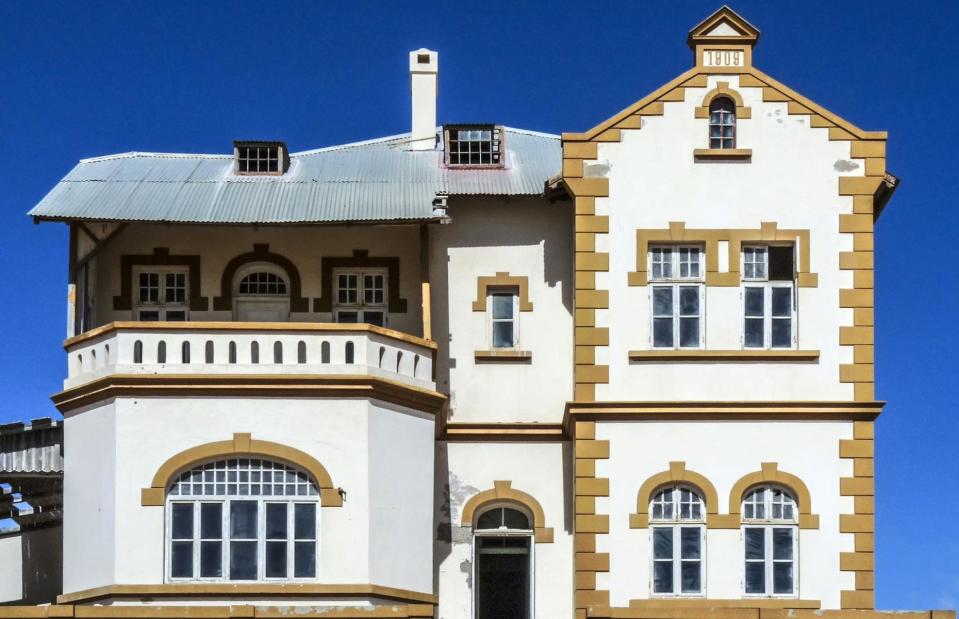
travelview / Shutterstock
The building was restored not too long ago and looks much like it did during Kolmanskop's glory days, bar the corrugated iron roof and the odd bit of weathering across the stucco and veranda. The interiors have been cleared of sand but lack the sumptuous furnishings they are likely to have contained way back when.
Architect's house
![<p>gaftels / Flickr [CC BY-ND 2.0]</p>](https://s.yimg.com/ny/api/res/1.2/cD2D23z12dUTzkiC_m8EeA--/YXBwaWQ9aGlnaGxhbmRlcjt3PTk2MDtoPTYxOQ--/https://media.zenfs.com/en/loveproperty_uk_165/30b268422684abf2941632c42909bc7b)
gaftels / Flickr [CC BY-ND 2.0]
The next house along was built by the town architect as his personal residence. In contrast to the traditional German style of the other buildings in the town, the property resembles a jaw-dropping neo-classical mansion. The house isn't in the best of states, but it remains standing and the roof seems to be intact, though a bathtub has somehow worked its way onto the dune outside.
Submerged in sand
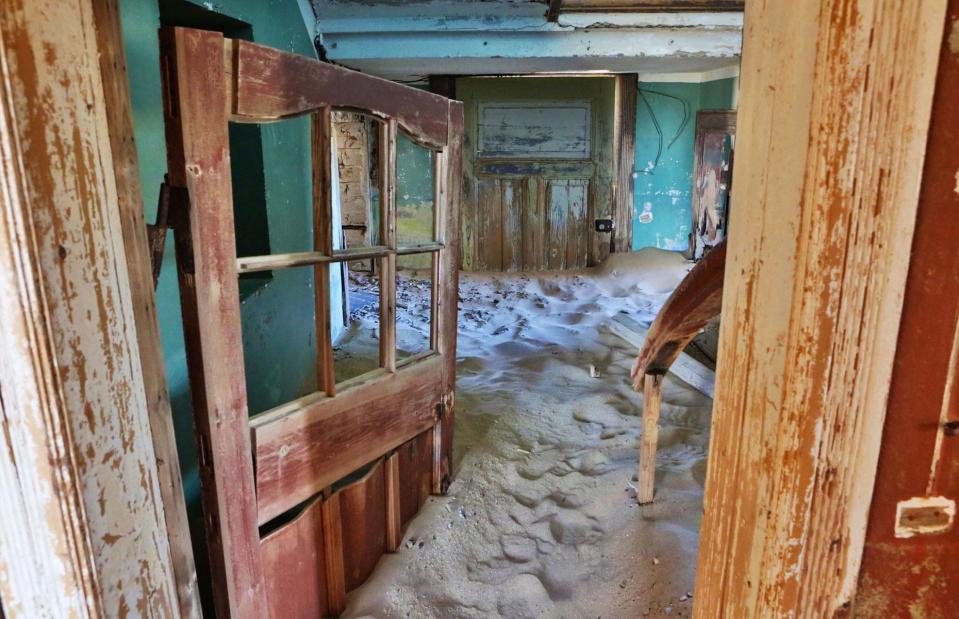
Matthieu Gallet / Shutterstock
The sand piled up in the interior of the architect's residence is another matter entirely. The rooms in the erstwhile posh mansion are positively swamped. Judging by this particular photo, the sand looks to be chest-height at best, the result of decades of slow and steady accumulation.
Desert life
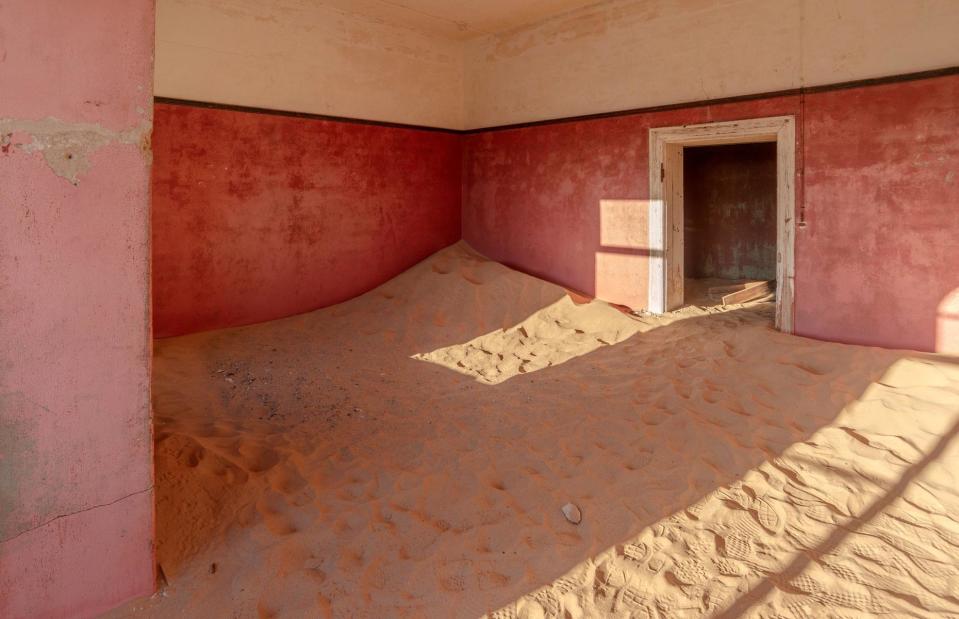
Yury Zap / Shutterstock
The sand in this room, which was possibly the parlor, is even more of a problem, almost reaching all the way up to the ceiling. The residents must have had a constant struggle ridding their homes of the stuff, which gets absolutely everywhere, but they adapted – and in other ways too. For instance, one family who wanted a pet suited to the desert climate bought an ostrich. The bird would drive the inhabitants to distraction, apart from at Christmas when it was used to pull a sleigh.
Bookkeeper's residence
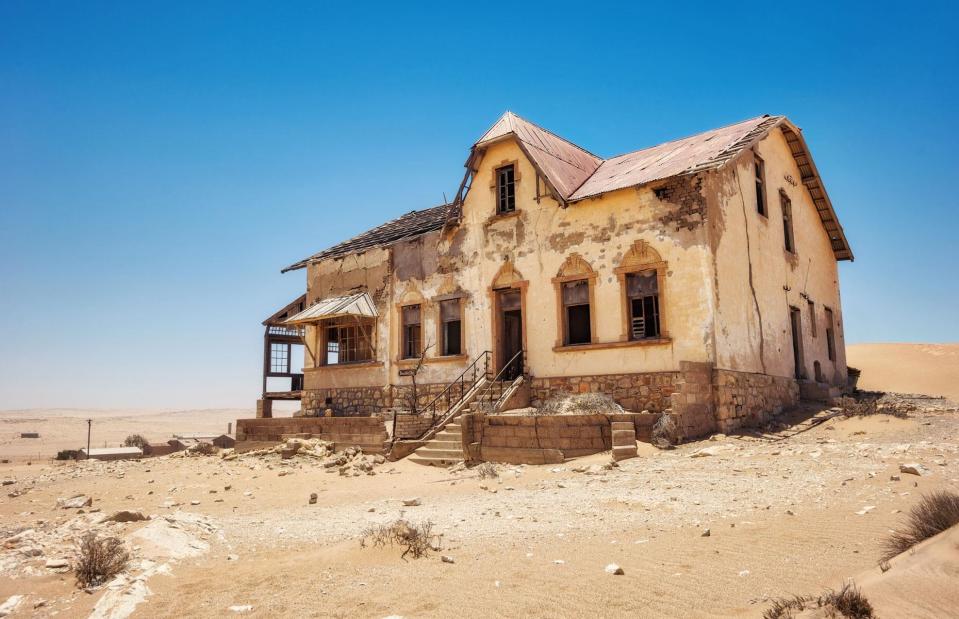
Lukas Bischoff Photograph / Shutterstock
Further along the dirt road, the home of the town's bookkeeper sits adjacent to the architect's residence. The accountant was clearly very well off, as this sizable mansion shows. While the house hasn't been completely invaded by sand, years of neglect have certainly taken their toll on the abandoned property.
Missing roof
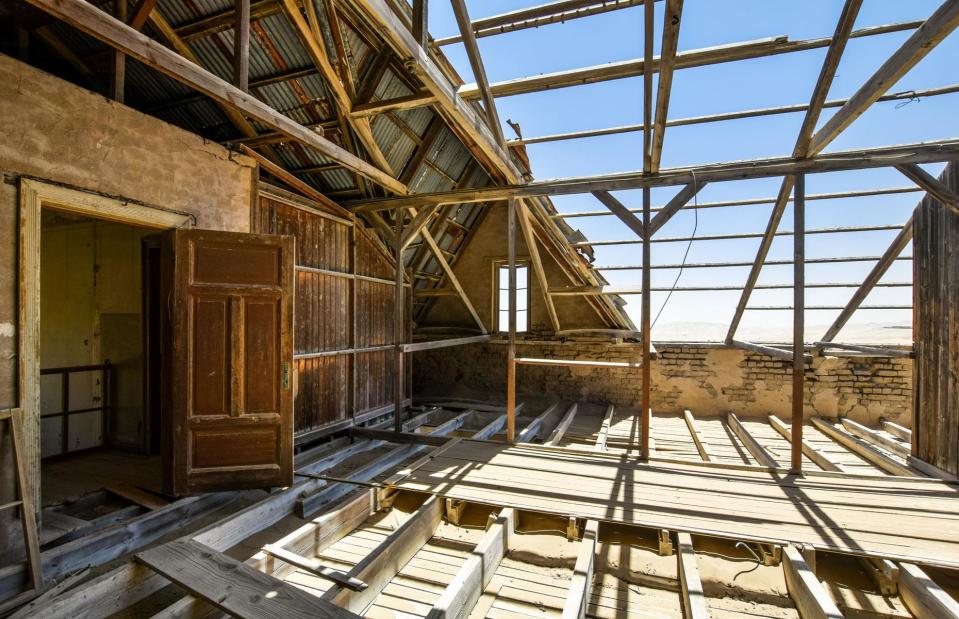
Juergen_Wallstabe / Shutterstock
Part of the corrugated iron roof is missing, along with an entire upper-floor room, though the lower floor is protected to a degree. Be that as it may, the glass is missing from the windows, the front door is hanging off its hinges and some of the stucco has worn away, uncovering the brickwork underneath.
Schoolmaster's residence

LUC KOHNEN / Shutterstock
Here, it's clear that time has also taken a toll on the schoolmaster's residence. For many years it was the home of German schoolmistress Mrs Hussmann. The derelict yet charming building has a rustic feel with its half-timbered gable and part-stone façade.
Fighting a losing battle
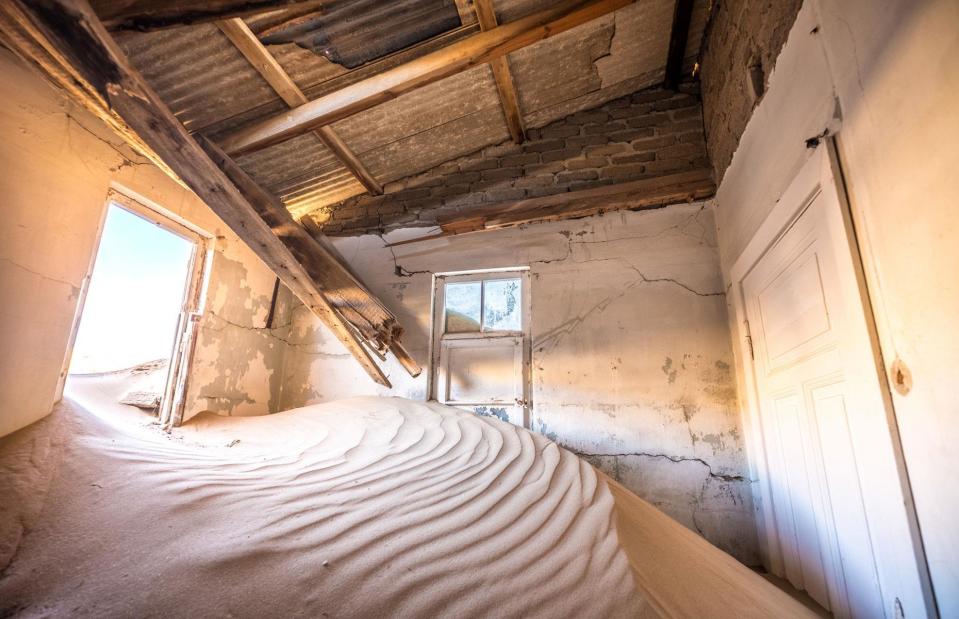
Janelle Lugge / Shutterstock
Peering inside the tumbledown building, Mother Nature has most definitely won the battle here. Sand fills the space and apart from the intricate patterns the wind has made on the dune's surface, the interior is no pretty sight. It's almost impossible to imagine what the room looked like when Mrs Hussmann called this space home.
Consumed by the dunes
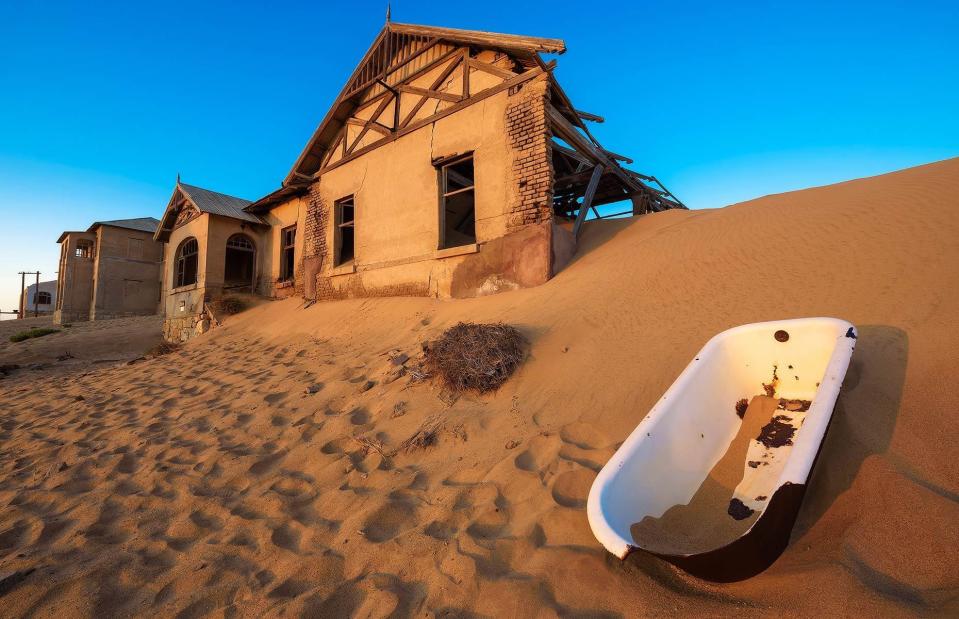
Nick Fox / Shutterstock
Today, the house is almost completely smothered in sand. In fact, it looks like it could be totally lost to the desert in the coming years if nothing is done to hold back the advance of the dunes. The roof has all but given way and the side walls are nearly non-existent, with just the front façade remaining more or less intact.
Quartermaster's house
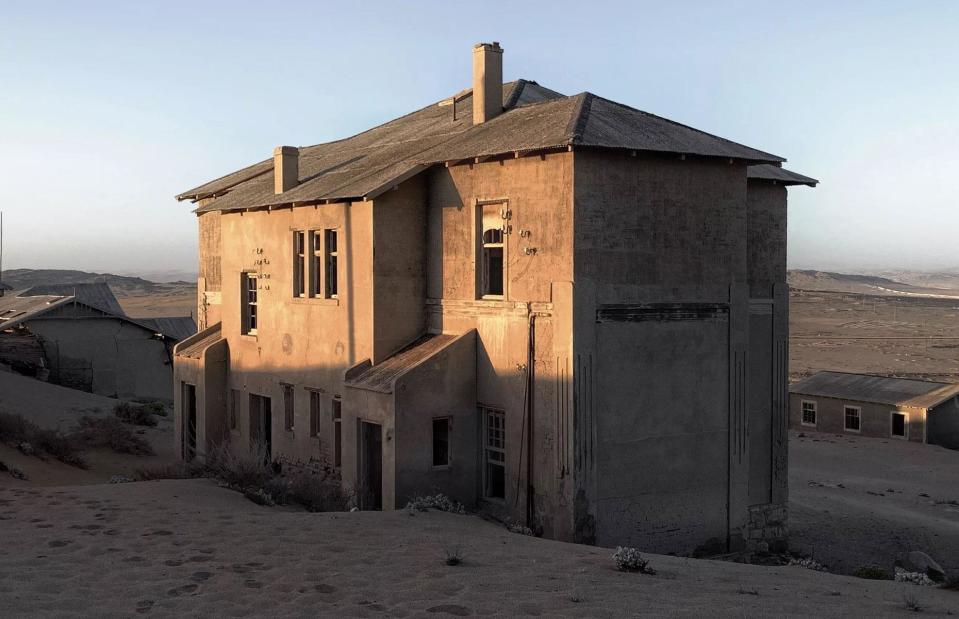
wang keran / Shutterstock
Next to the schoolmaster's house is the residence of the quartermaster, a non-commissioned army officer who was in charge of supplies for the town. This property differs in style somewhat from the other mansions on the row and has more of an Art Nouveau vibe, or Jugendstil, as the artistic movement was known in Germany.
Original features
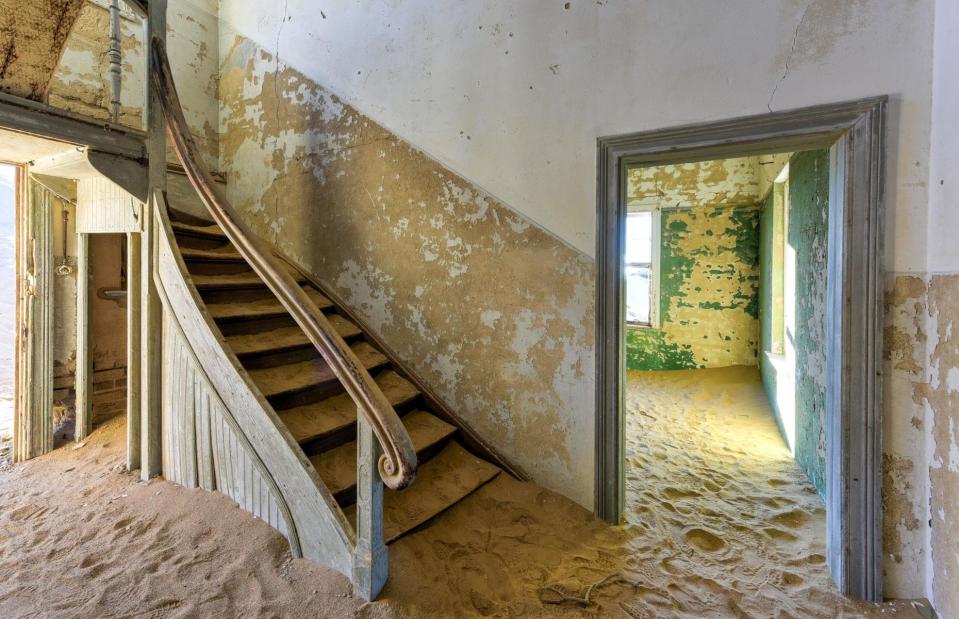
Felix Lipov / Shutterstock
The floors of the interior are covered in sand but the rooms aren't inundated. Many of the original features have survived, including the delicate Jugenstil wallpaper and elegant sweeping staircase. In 1928, a year after the kasino and turnhalle was completed, the most bountiful diamond fields ever were discovered some distance south of Kolmanskop.
Kolmanskop's decline
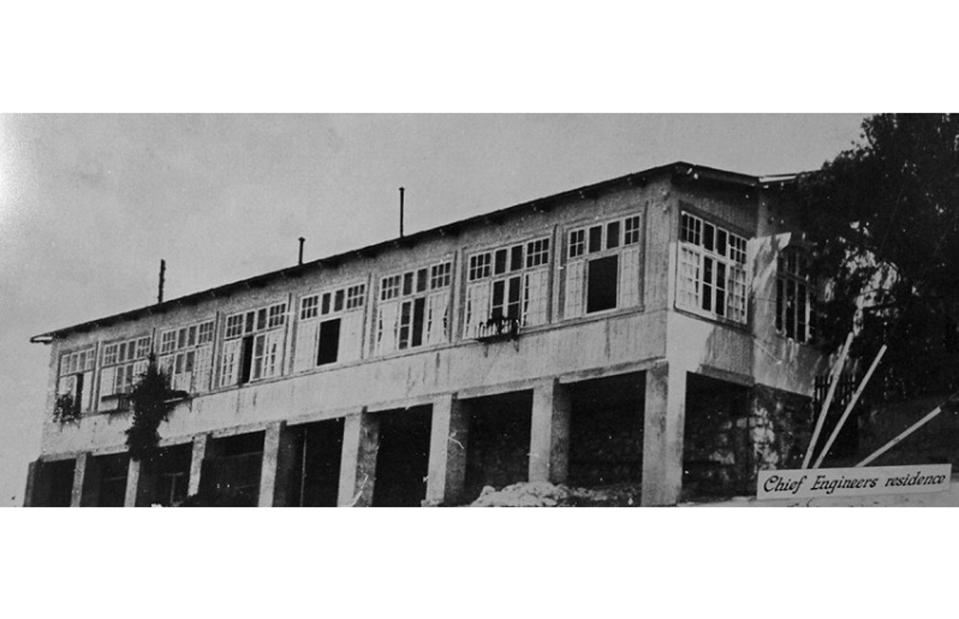
Unknown author / Public domain
By this time, the diamonds were drying up in the town's mine, prices for the precious stones were falling and Kolmanskop plunged into a steep decline. An exodus of residents fled the town to head south and by 1956, it had been completely vacated and left to the punishing desert elements. Sand slowly began to seep into the settlement's empty buildings, including the chief engineer's residence, pictured here in the town's heyday.
Tourist attraction

Ekaterina Khudina / Shutterstock
Today, the home is a total wreck. Located within a restricted area, Kolmanskop lay forlorn and forgotten until 2002 when a local firm called Ghost Town Tours was given permission to run visits to the settlement for tourists. It now attracts 35,000 people a year and has been featured in movies, TV shows and even a Vogue magazine fashion shoot.
Succumbing to the sands of time
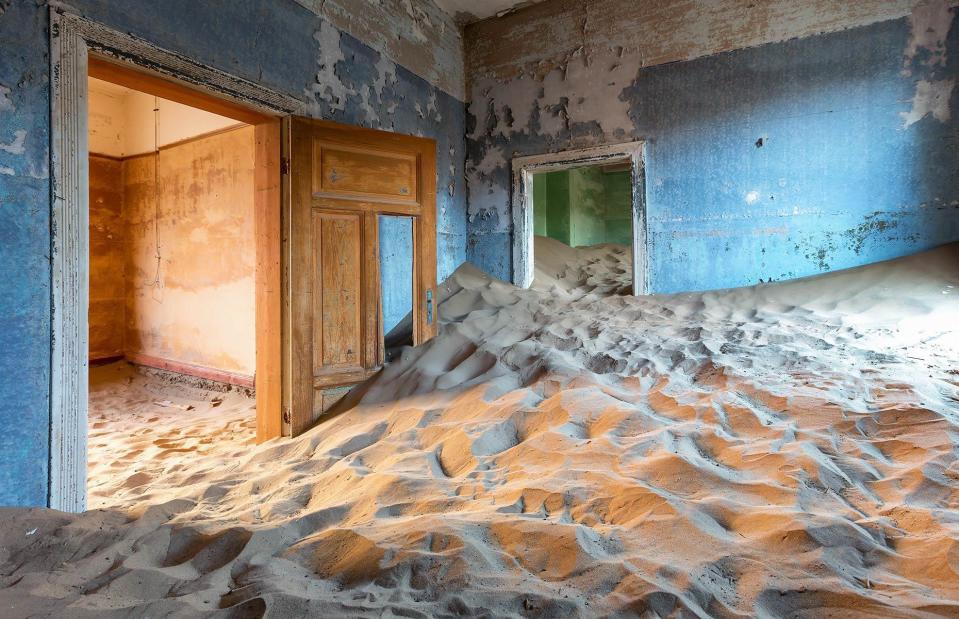
Kanuman / Shutterstock
Yet the sand doesn't stop blowing in and Ghost Town Tours, which has overseen the restoration of several of the historic buildings, is just about managing to keep the desert at bay. While the opulence of this fascinating mining outpost might be a thing of the past, its buildings stand as a monument to a truly remarkable settlement that, for a time, thrived in the barren desert against all odds.


